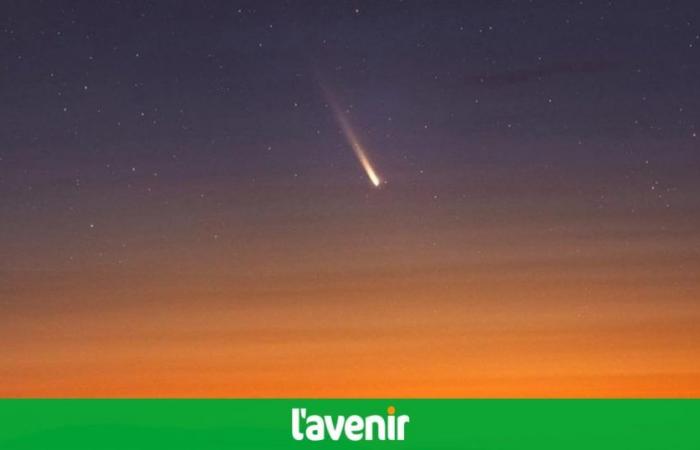
However, comet C/2023 A3 (Tsuchinshan-ATLAS) is unique. What makes it different from the others is its exceptional brightness. It is estimated to be 100 times brighter than all other comets observed during the 21st century. Enough to push the Paris Observatory to speak of it as “the comet of the century”!
Arriving in the inner Solar System after a journey of millions of years from the Oort cloud, the Tsuchinshan-Atlas comet takes its name from the two observatories at the origin of its discovery: the first in China in January 2023 and the second , a month later, in South Africa.
Breathtaking shots
In recent days, passionate astronomers have already captured magnificent images of this unique celestial body in the southern hemisphere (and hopefully in the northern hemisphere).
Photos from China, Chile, New Zealand, Namibia and also the southern United States have been popping up in recent days on the social network X (formerly Twitter).
A critical moment for its “survival” this Friday
But to be able to hope to observe it in our regions, this day of Friday September 27 turns out to be a pivotal moment in the life of this comet like no other, as explained by the Paris Observatory. Around 5 p.m., comet Tsuchinshan-Atlas will reach perihelion, the moment when it will pass closest to the Sun, approximately 58 million kilometers away.
This is a critical step for the “survival” of the comet. If it does not disintegrate while passing so close to our star, it will remain observable at sunrise, mainly in the southern hemisphere, until Monday September 30. This will require a clear southeast horizon.
When will it be observable here?
Comet Tsuchinshan-ATLAS will then continue its route between the Sun and Earth but its observation will be almost impossible from October 3 to 12, due to the glare of the Sun.
On Saturday, October 12, Comet Tsuchinshan-ATLAS will reach its closest point to Earth, approximately 71 million kilometers away.
From October 13, 2024, it will appear on the other side of the Sun, which will be the best time to observe it in the northern hemisphere. With a clear western horizon and a good pair of binoculars, the comet will be observable about an hour after sunset.
Having already passed as close as possible to the Earth, it will then shine less and less…





